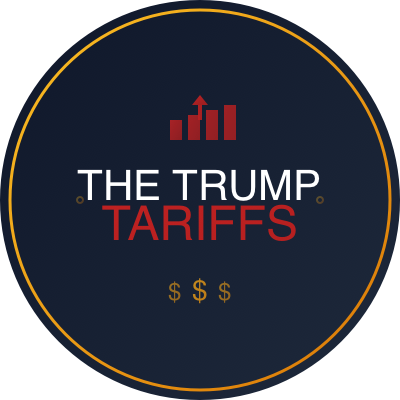NextFin news, the US federal government under President Donald Trump is actively considering expanding steel tariffs originally enacted during his earlier administration to encompass a broader spectrum of steel-linked goods. This proposal, gaining traction in November 2025, seeks to amend the existing tariff framework to include additional products that incorporate steel as critical inputs or raw materials. The administration is evaluating this move in Washington, D.C., with the goal of reinforcing the competitiveness of the domestic steel sector and related manufacturing industries at a time when global steel markets remain volatile.
President Donald Trump’s administration officially took office in January 2025, and one of its early trade policy focuses has been reviving and revising protectionist measures introduced during his prior presidency. These include Section 232 tariffs imposed on steel and aluminum which were originally justified on grounds of national security to curb imports perceived to threaten domestic production capacity. Reports indicate that the current administration is leaning toward enlarging this tariff regime to cover finished steel products and various industrial goods reliant on steel components, moving beyond the raw steel imports targeted by the original measures.
The consideration to broaden tariffs comes amid persistent concerns about foreign steel dumping, especially by nations that subsidize their steel industries heavily or engage in aggressive export strategies. It also responds to internal lobbying pressure from US steel producers and allied sectors which argue that existing tariffs have been insufficient to prevent market share erosion and job losses in steel-dependent manufacturing hubs located primarily in the Midwest and Southeast US states. Although no formal announcement has been made yet, industry sources and government insiders have confirmed that tariff expansion is under active review as of early November 2025 in key policy and trade forums within the US Trade Representative's office and the Department of Commerce.
This potential policy shift is motivated by several factors. Foremost is the desire to protect critical supply chains that underpin US manufacturing competitiveness and national security. Steel is a foundational material for numerous industries including automotive, construction, defense, and infrastructure. Expanding tariffs to more steel-linked goods could discourage importers from bypassing existing tariffs by importing semi-finished or finished goods instead of raw or semi-processed steel. It also aligns with the broader Trump administration economic agenda emphasizing domestic job creation, reshoring of manufacturing activities, and enhanced industrial sovereignty amid intensified geopolitical rivalry with China and other steel exporting nations.
Mechanisms to implement the tariff expansion would likely involve a review process under Section 232 of the Trade Expansion Act and possibly Section 301 investigations or other trade remedy tools. The administration is also reportedly considering calibrated tariff rates that differentiate between countries based on trade behavior and compliance with US steel market standards, potentially incorporating safeguard measures to avoid broader inflationary effects on consumers and downstream industries.
The anticipated economic impacts of this tariff expansion are multifaceted. On one hand, the US steel industry, representing over $100 billion annually in revenue and employing approximately 140,000 workers directly, could experience improved market share and revenue growth. This boost could have positive multiplier effects in regional economies heavily reliant on steel manufacturing, supply chain services, and associated industrial activity.
Conversely, downstream industries using steel as an input might face increased raw material costs. For example, the automotive and machinery sectors, which incorporate steel in components accounting for up to 50% of their material costs, could see margin pressures and rising prices passed to consumers unless offset by productivity gains. This dynamic risks inflationary pressures in consumer goods and construction sectors, potentially sparking trade partner retaliation and complicating the US’s commitments at the World Trade Organization (WTO) and within multilateral trade frameworks.
Historical precedent from the 2018-2020 tariff regime suggests that while tariffs initially reduced steel imports by approximately 30%, they also increased domestic steel prices by 10-20% and prompted retaliatory tariffs from key trading partners including the European Union, Canada, and Mexico. This resulted in tension across integrated North American supply chains, with some manufacturers relocating production offshore or lobbying for exemptions. The current administration’s challenge lies in balancing steel industry protection with broader economic impacts and international trade relationships.
Looking forward, this tariff expansion signals a continuation and intensification of the US’s strategic use of trade policy as a tool to rebuild domestic industrial capacity. It is likely to catalyze negotiations with trade partners aiming to secure exemptions or carve-outs and could accelerate US efforts to negotiate closer alignment of steel production standards and anti-subsidy measures in bilateral and plurilateral trade agreements. In parallel, the administration’s move aligns with geopolitical strategies to reduce China’s influence over global steel supply chains, as steel exports from China and allied nations remain under scrutiny for market distortions.
Investors and industry stakeholders must monitor the evolution of this tariff review closely, as expanded tariffs could reshape market dynamics for steel, raw materials, and manufactured goods. Steel producers could see capital expenditure increases as enhanced capacity is developed domestically, while manufacturers facing input cost inflation might accelerate digitalization and automation to remain competitive. Additionally, the tariff expansion may influence steel-importing nations to diversify supply or increase their domestic production, potentially realigning global steel trade flows over the medium term.
In summary, the US’s consideration to expand Trump-era steel tariffs in November 2025 underscores the administration’s commitment to industrial revival and supply chain security amid complex global trade challenges. While the protectionist measures aim to safeguard the domestic steel sector, they carry significant trade-offs affecting cost structures, inflation, and international relations. The coming months will be critical in assessing the final scope, scale, and implementation modalities of these tariffs, which will have widespread implications across the US economy and global steel markets.
According to Livemint, this tariff expansion is emblematic of the Trump administration’s broader economic policy orientation favoring assertive trade defense to bolster domestic manufacturing.
Explore more exclusive insights at nextfin.ai.

